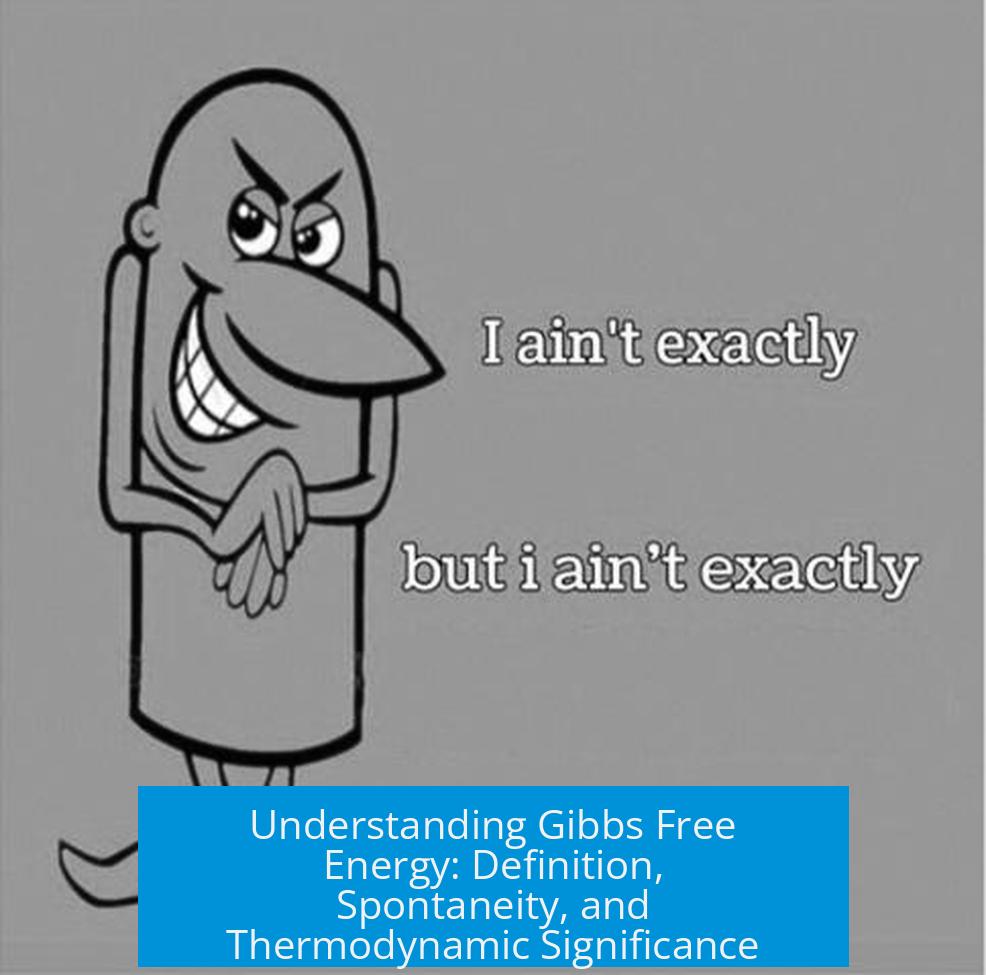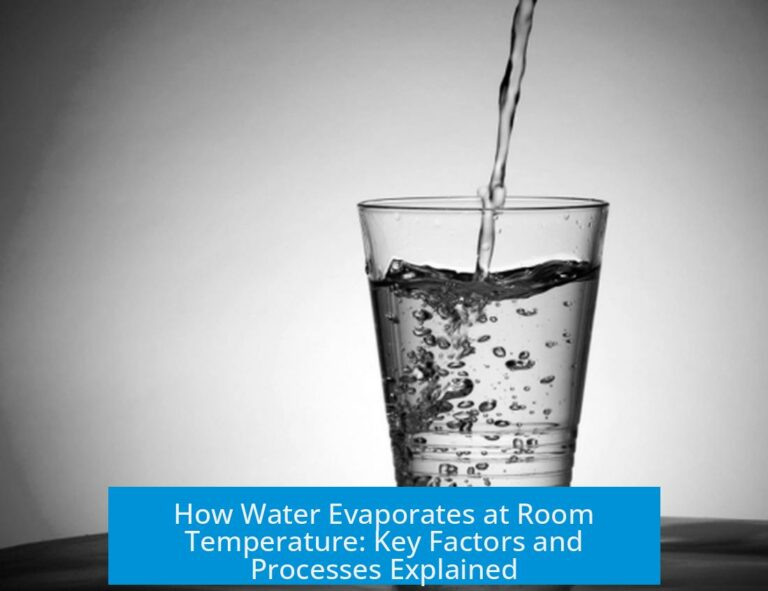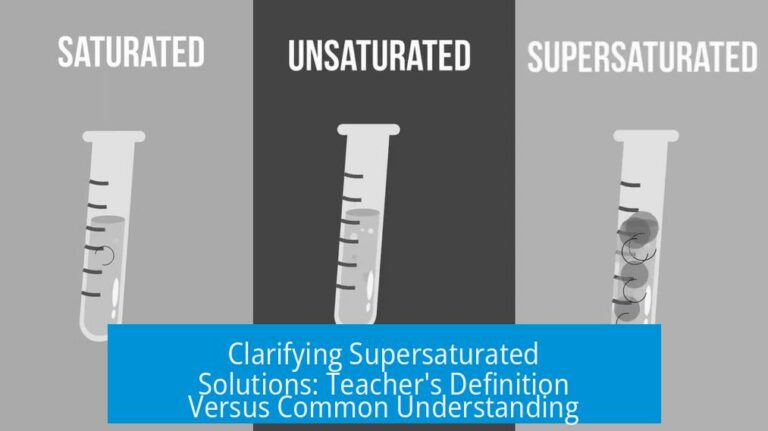What Exactly Is Gibbs Free Energy?
Gibbs free energy is a thermodynamic potential that quantifies the maximum amount of useful work obtainable from a system at constant temperature and pressure. It indicates whether a process or reaction will occur spontaneously and how much energy is available to do work aside from volume expansion.
1. Defining Gibbs Free Energy
Gibbs free energy, symbolized as G, represents the energy in a system that can perform work under specific conditions. It combines enthalpy (H), temperature (T), and entropy (S) into one measurable value. The fundamental formula is:
G = H – T × S
Here, G is the Gibbs free energy, H the enthalpy (total heat content), T the absolute temperature in Kelvin, and S the entropy, which measures system disorder. This equation expresses how enthalpy and entropy interplay with temperature to determine the available energy for work.
2. Spontaneity and Work Capacity
Gibbs free energy changes (ΔG) govern the spontaneity of reactions or processes at constant temperature and pressure.
- Negative ΔG: The process proceeds spontaneously without outside influence.
- Positive ΔG: The process is non-spontaneous; energy must be supplied.
- ΔG = 0: The system is at equilibrium; no net change occurs.
A negative ΔG means the system can perform maximum non-expansion work, such as electrical work or chemical synthesis, at 100% efficiency theoretically. This does not include work done by volume change, like gas expansion. For example, in electrochemical reactions, ΔG relates to the maximum electrical work obtainable.
3. Conceptual Analogies for Understanding Gibbs Free Energy
Several analogies help clarify Gibbs free energy’s role in chemical and physical changes:
- Spring Analogy: A spring at equilibrium is neither stretched nor compressed, having minimum potential energy. Similarly, reactions proceed toward states that minimize Gibbs free energy. When a spring is stretched or compressed (analogous to a system out of equilibrium), releasing it moves the system toward equilibrium, releasing energy usable to do work.
- “Punch” Analogy: Imagine reactants and products possessing “punch,” representing their Gibbs free energy levels. Reactions proceed toward balanced punch on both sides, meaning the forward and reverse rates are equal at equilibrium (ΔG = 0). If reactants have more punch, the reaction will favor product formation, and vice versa.
- Entropy and Enthalpy Interplay: Enthalpy captures chemical energy changes, while entropy reflects disorder or dispersal tendencies. Gibbs free energy arises from the balance between these opposing effects influenced by temperature (G = H – TS). The -TS term represents energy unavailable for work due to entropy.
4. Thermodynamic Conditions and Context
Gibbs free energy is specifically relevant under constant pressure and temperature conditions, common in many chemical and biological systems.
- At constant pressure and temperature, Gibbs free energy predicts the direction of processes and the maximum useful work.
- For systems at constant volume and temperature, the Helmholtz free energy (A) serves a parallel role, emphasizing different physical scenarios.
- Gibbs free energy is particularly useful when volume can change (like gas reactions with pistons), whereas Helmholtz free energy applies in rigid containers.
5. Equilibrium and Reaction Direction
Systems tend naturally toward minimizing Gibbs free energy. Over time, reactions shift until ΔG approaches zero, indicating equilibrium:
- At equilibrium, forward and reverse reaction rates equalize.
- The equilibrium constant (K) relates directly to Gibbs free energy. The relationship is given by:
| Expression | Interpretation |
|---|---|
| ΔG° = -RT ln K | Standard Gibbs free energy change (ΔG°) relates to equilibrium constant K, R is the gas constant, T is temperature (Kelvin). |
While ΔG determines whether a reaction is thermodynamically favorable, it does not provide information about how fast the reaction will proceed. Kinetic factors, like activation energy, control reaction rates independently.
6. Broader Thermodynamic Significance
Gibbs free energy connects mathematically to the entropy changes of the universe. Although measuring total entropy change is impractical, Gibbs free energy offers a way to infer spontaneity by examining only the system’s properties.
Essentially, Gibbs free energy predicts if a reaction increases the universe’s total entropy by tracking Gibbs energy changes in the system alone. This makes it a powerful tool for practical thermodynamic analysis.
Summary of Key Technical Points
- Gibbs free energy (G) is defined as G = H – T × S, where T is in Kelvin.
- ΔG indicates reaction spontaneity: negative ΔG means spontaneous process, positive means non-spontaneous.
- G measures maximum useful (non-expansion) work obtainable from a system at constant temperature and pressure.
- Reactions proceed toward minimizing Gibbs free energy; equilibrium occurs at ΔG = 0.
- Gibbs free energy is related to the equilibrium constant but does not predict reaction kinetics or rate.
- Relevance depends on experimental conditions: Gibbs for constant pressure; Helmholtz for constant volume.
- Provides a practical measure to evaluate entropy changes and spontaneity without direct entropy measurement.
What is Gibbs Free Energy in simple terms?
Gibbs Free Energy indicates the amount of energy in a system available to do useful work. It combines enthalpy and entropy effects at constant temperature and pressure.
How does Gibbs Free Energy relate to reaction spontaneity?
A negative change in Gibbs Free Energy (ΔG) means a reaction happens spontaneously. Positive ΔG means the reaction needs external work to proceed.
Why is Gibbs Free Energy called ‘free’ energy?
It represents energy that can perform work, excluding energy lost to entropy. The formula is G = H – TS, where TS is energy unavailable for work.
What does it mean when ΔG = 0 for a chemical reaction?
When ΔG equals zero, the reaction is at equilibrium. The forward and reverse reaction rates balance, and the system has minimum Gibbs Free Energy.
How is Gibbs Free Energy different from Helmholtz free energy?
Gibbs Free Energy applies to constant pressure conditions, while Helmholtz free energy is used at constant volume. Gibbs relates to work with pistons; Helmholtz works with rigid systems.





Leave a Comment